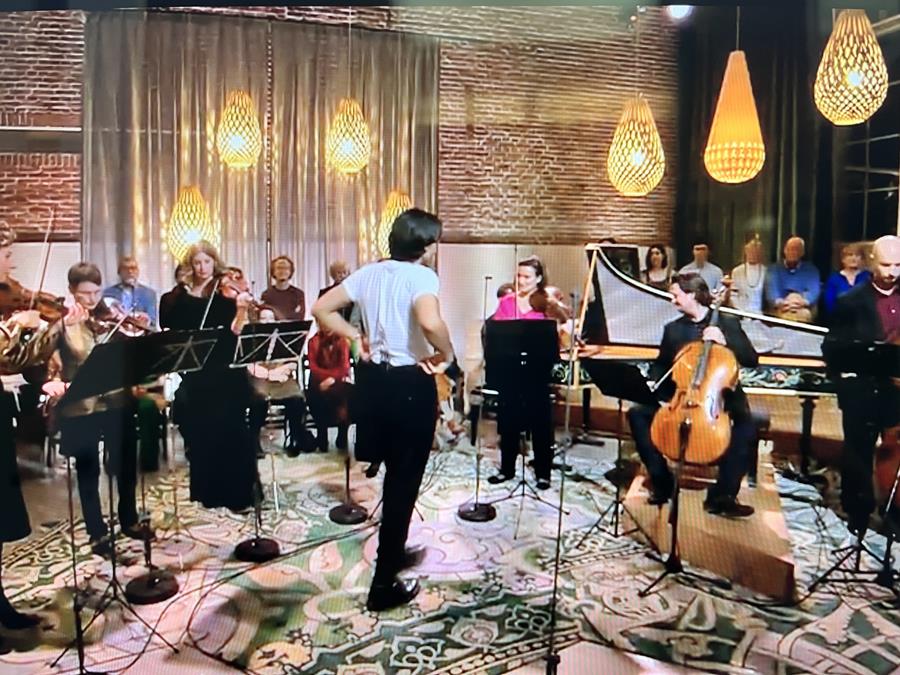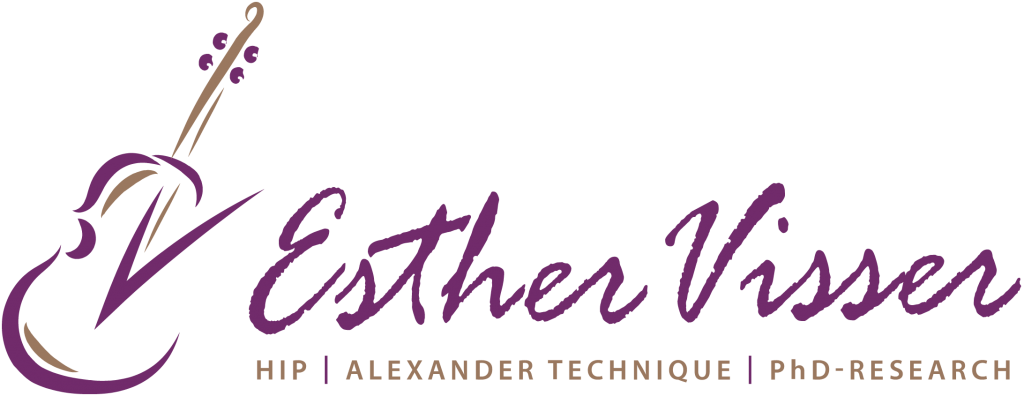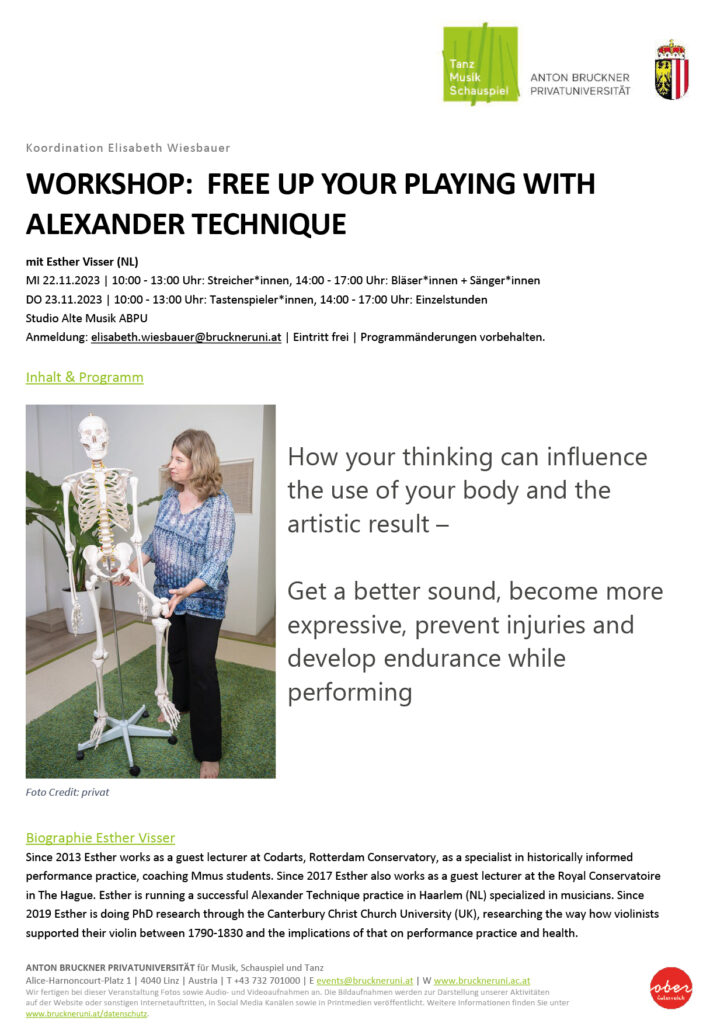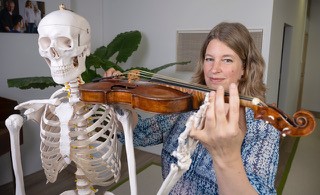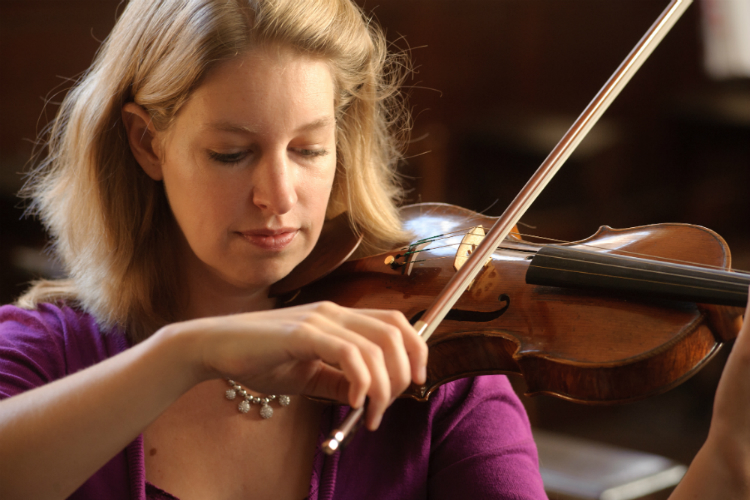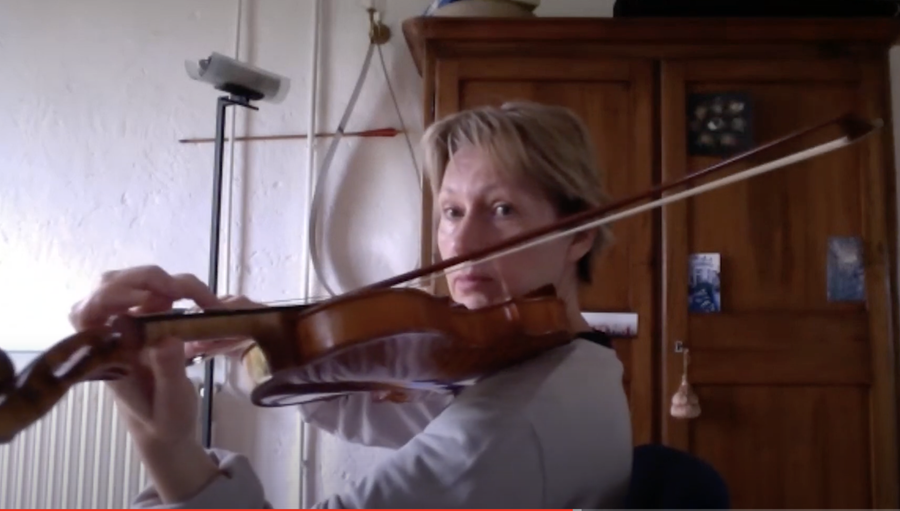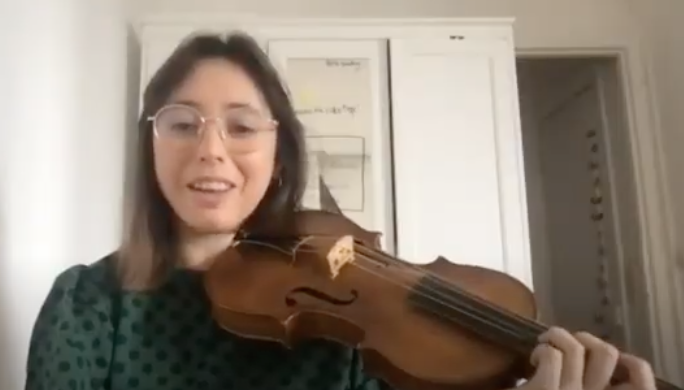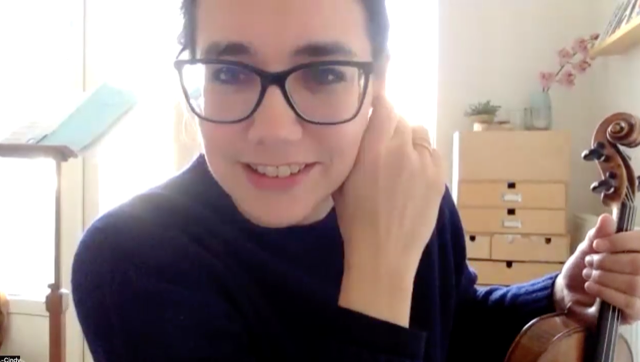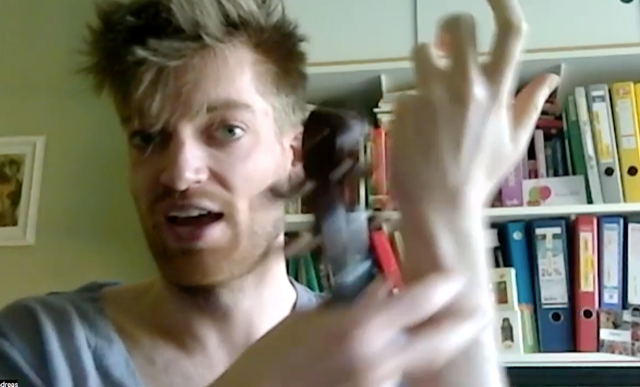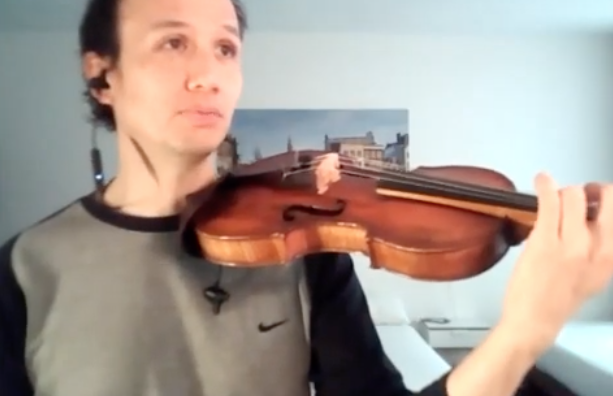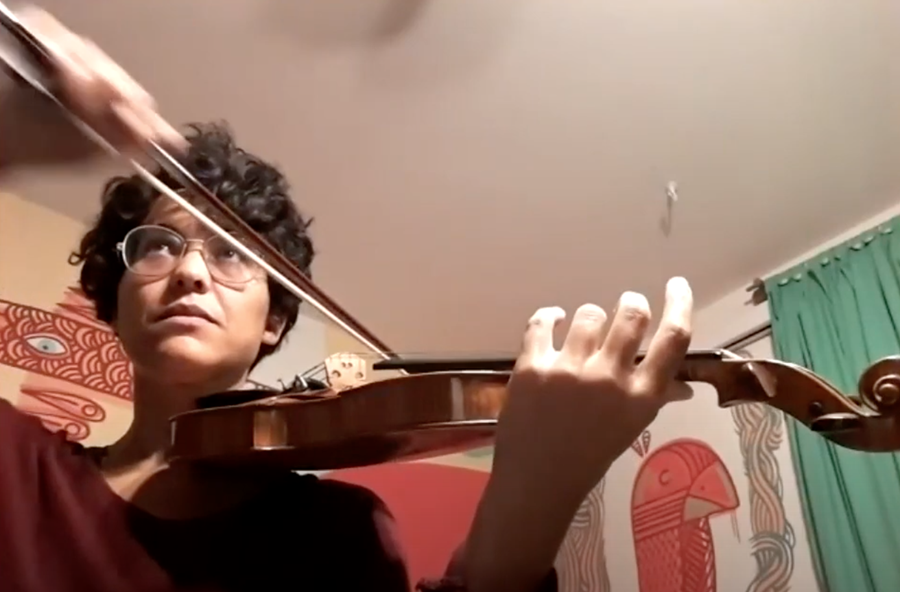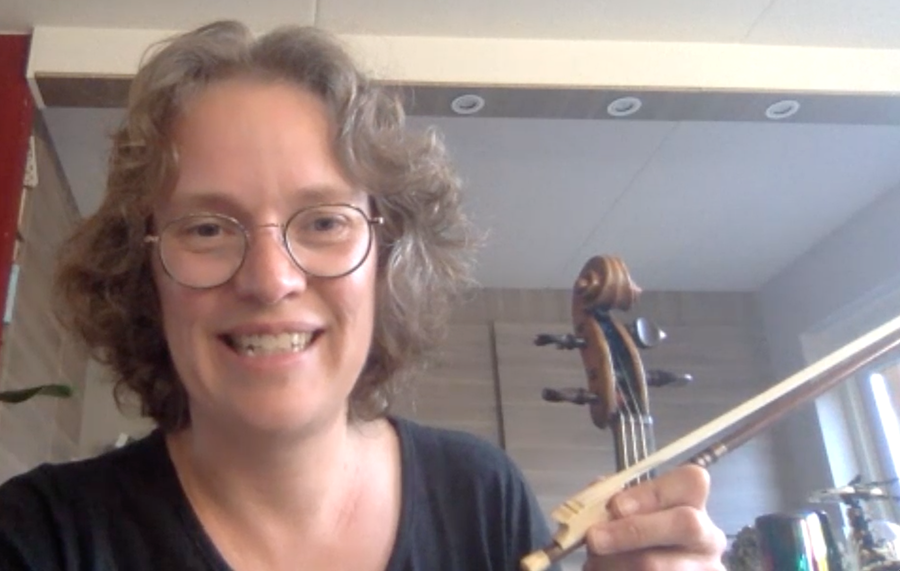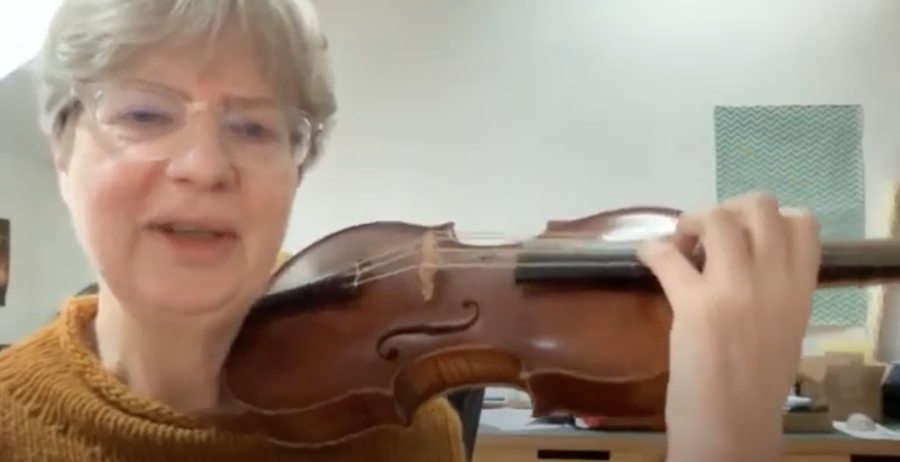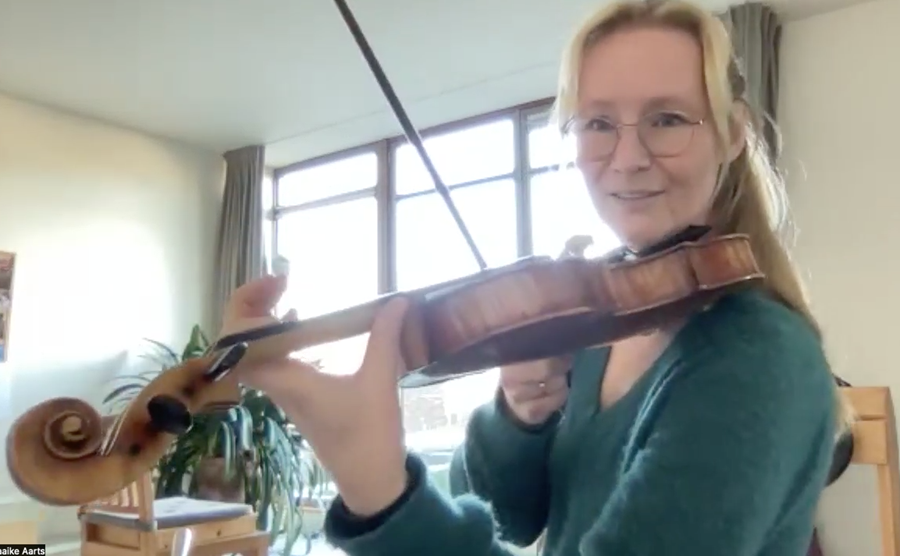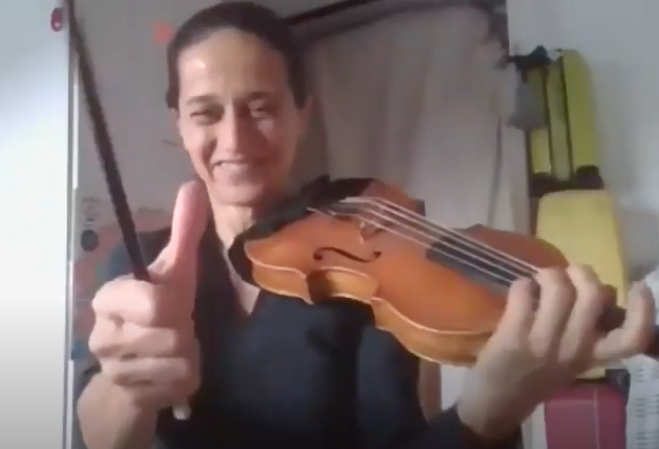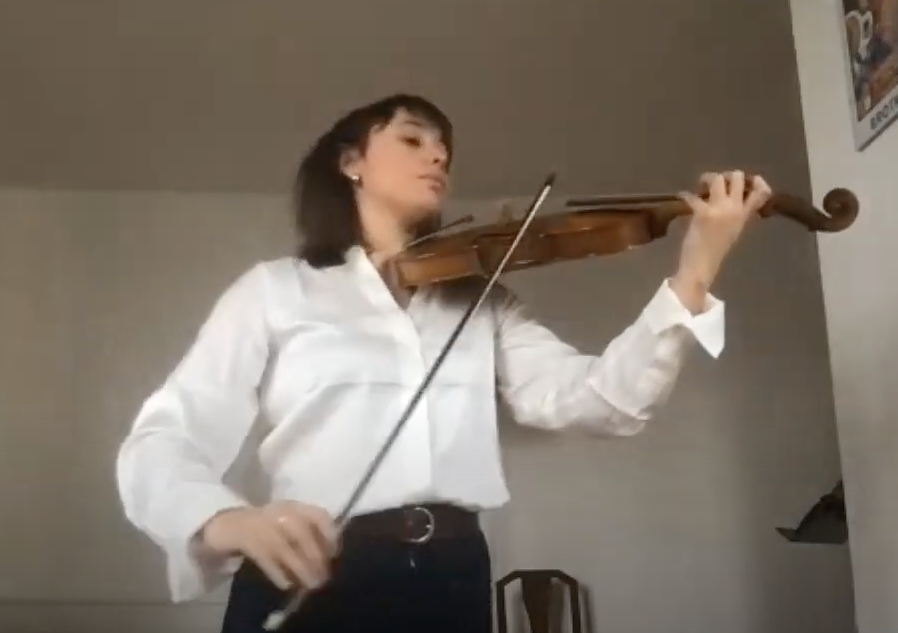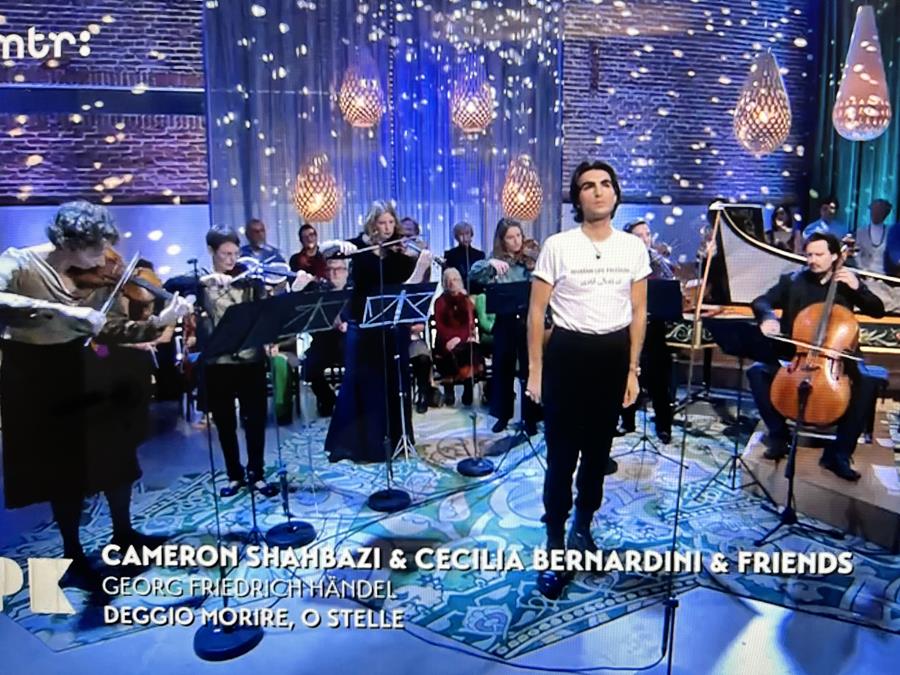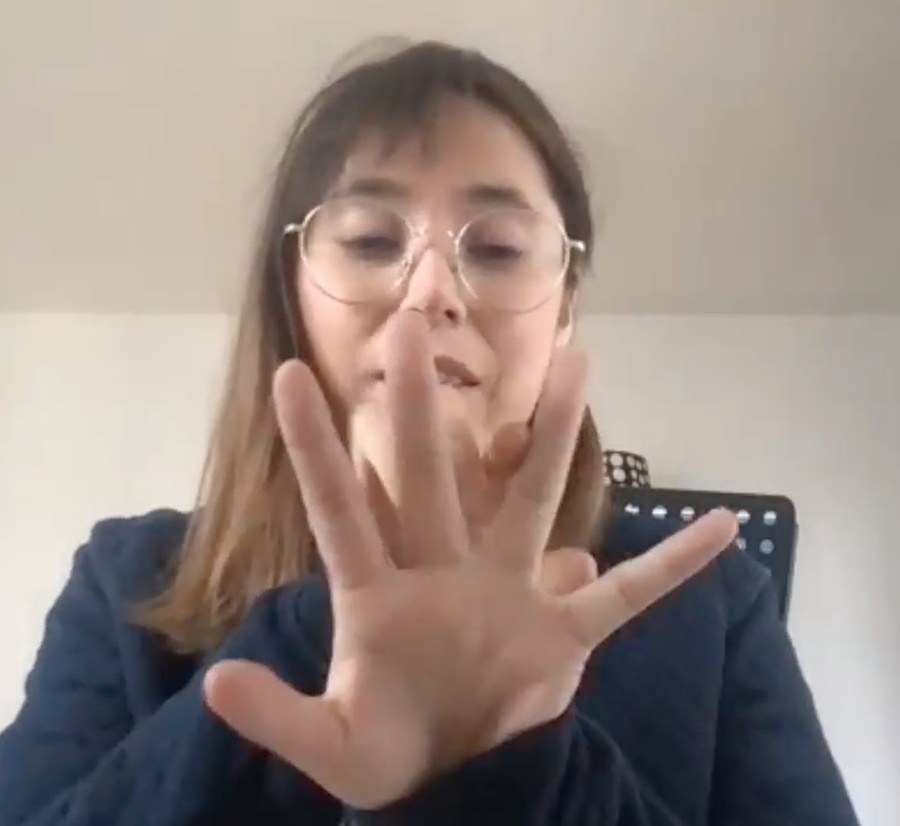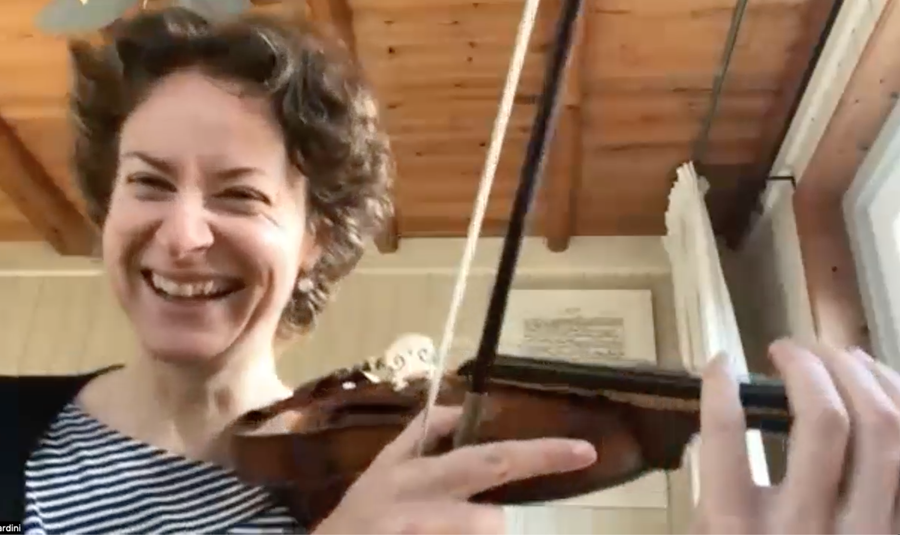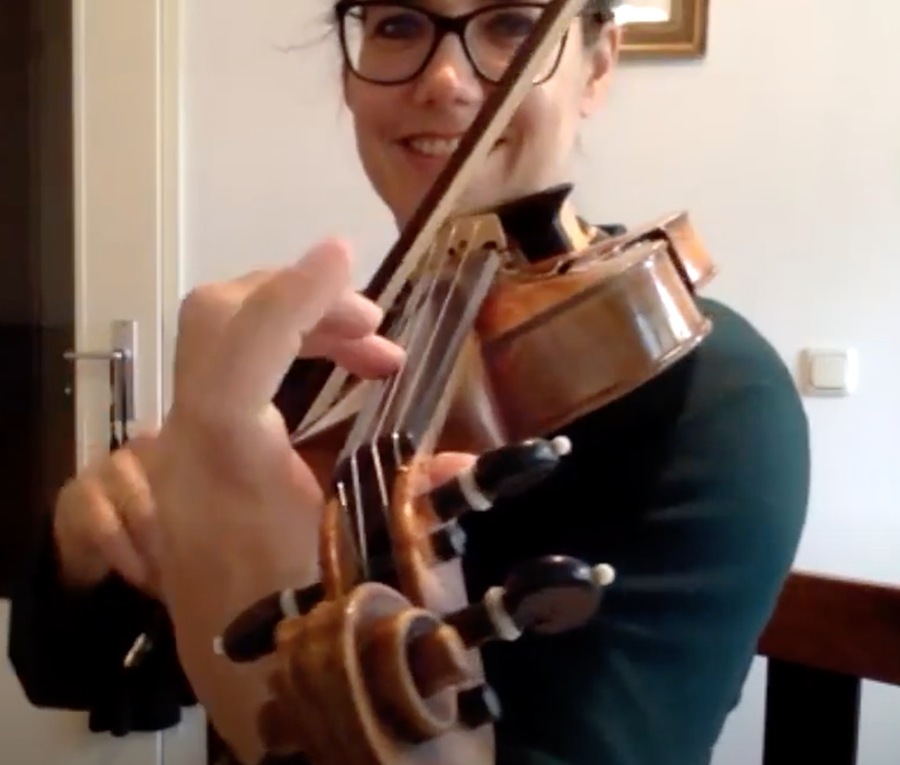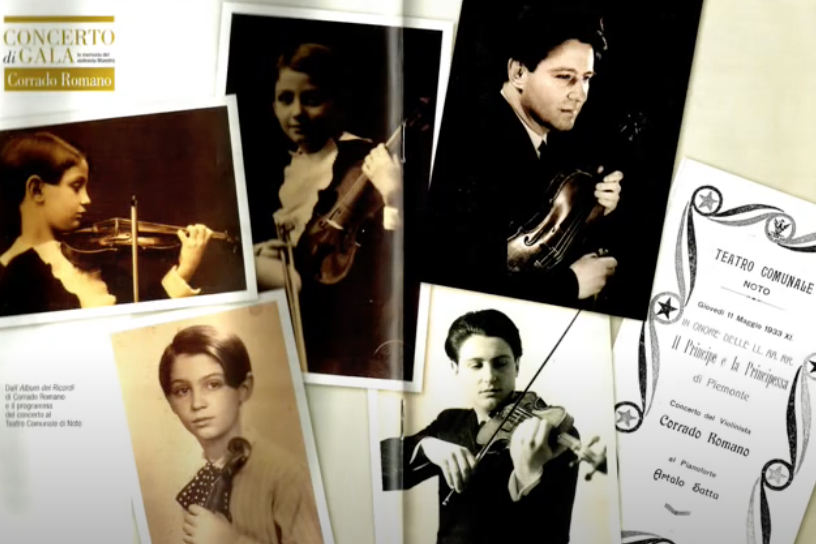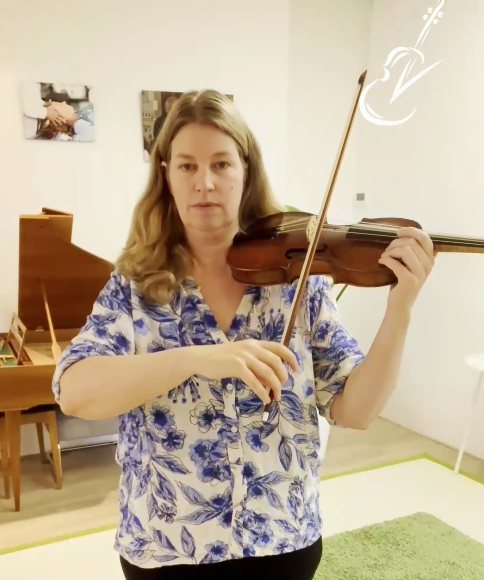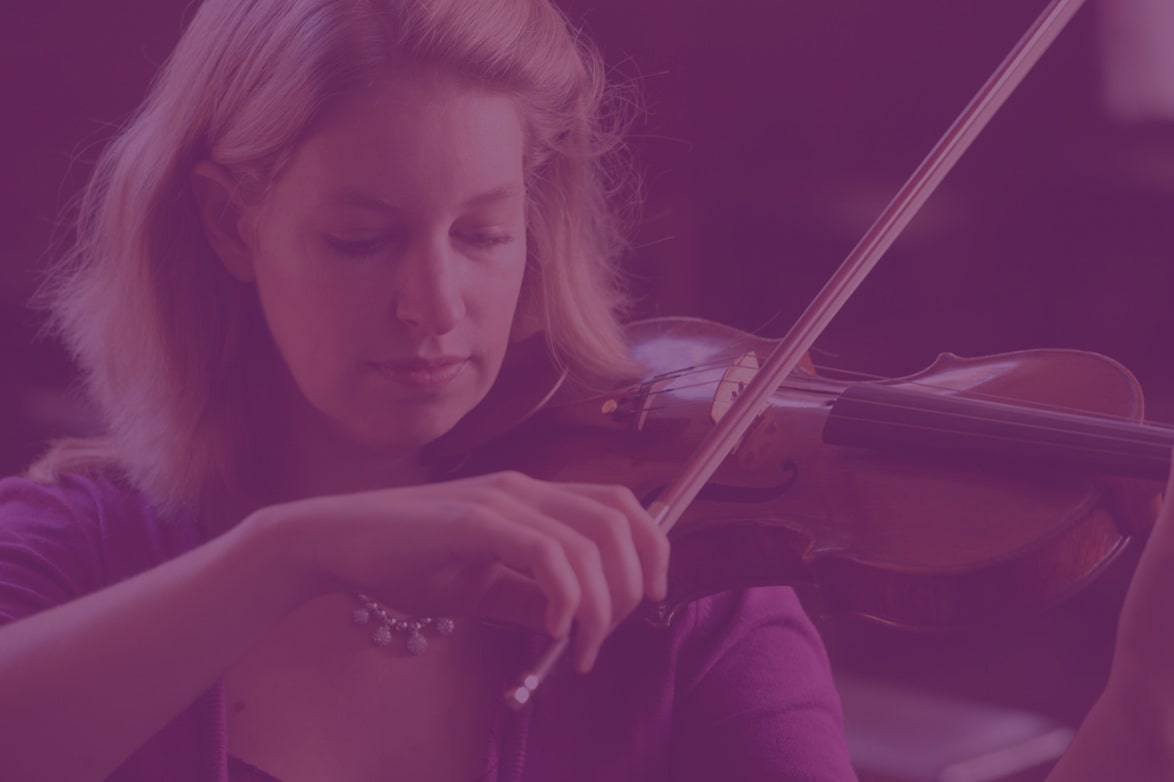
The 13th week of my experiment and Happy New Year!
Hi everyone,
This is the 13th week of the experiment on playing without a shoulder rest and / or chin rest. Here are some updates and some feedback.
I wish you all a Happy New Year! This is the first newsletter of 2023. The newsletters will continue as long as the experiment is actively running.
Thank you for sending me your videos, it’s really important for my research. Some people just finished the whole 12 week program, sent their last video and filled out the exit survey. Fantastic, thank you so much! The majority however is still about half way in the program and that is perfectly fine, please do take all time you need and don’t hurry.
Again, some more new participants joined as well, welcome to Anne and Judy! Many people already filled out the entrance survey. Thanks. If you didn’t do it yet, please do so before you start the lessons.
If you know more people who like to join, for example starting this or next month, this is still possible through my website. If you missed the newsletter last week, you can still read it here. There is a collection of past newsletters at my website available too.
Please be welcome to join the Zoom session next Wednesday 11.00 AM (Dutch time) if you want… Just to meet or to ask some questions. Would be nice to meet up. You can watch Zoom sessions back on the login page where the video lessons are, as well.
I was very happy to see Jun Keller, one of the participants in our experiment, play in the New Years concert in Vienna. I think his body use is one of the best in the first violin section in that orchestra ánd he is the only one in that section playing without using a shoulder rest… would there be a relation between these things? 😉 Thank you for the lovely concert, Jun!
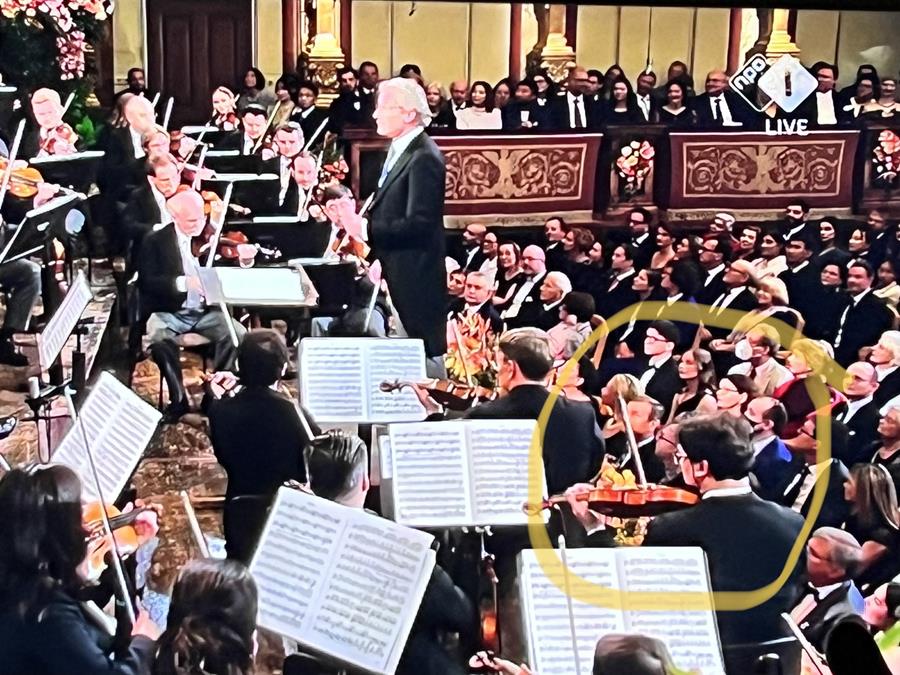
“I think your research is very important and I think you are very right on all the points you raised. I am so thankful that your talk about this, because almost every musician has unhelpful habits.”
– Jun Keller, Vienna Philharmonic Orchestra,
participant in the experiment
About the holiday
It would be best if you could continue with the 10 min per day during the holiday, so your learning process will not have an interruption. But if you prefer to take a break, this is fine too, just please let me know, no problem! Our zoom sessions will continue tot take place, also on Wednesday January 4th, and after that. Some people already informed me, that usually Wednesday mornings are not possible for them as they have to work, but in the holidays they are free and able to join! So this can be a nice chance to meet up if you are too busy otherwise. Looking forward!
13th Zoom session
Last Wednesday we had a 13th zoom session with some participants of this experiment. It was lovely. If you want to watch it: I recorded the session and there is a link to it in the login page under the video lessons.
Elisabeth from Belgium, Cecilia from Holland, Daniela from Italy and Nicolette form the UK were taking part. Elisabeth Derksen joined us for the first time, as she usually has to work on Wednesdays but now had holidays, so it was very nice to meet her. She is a viola player, student with my Alexander Technique colleague Marc Pijpops from Antwerp who is a viola player and also takes part in this experiment himself. Elisabeth is specializing at a music academy on the subject of body use while playing and Alexander Technique.
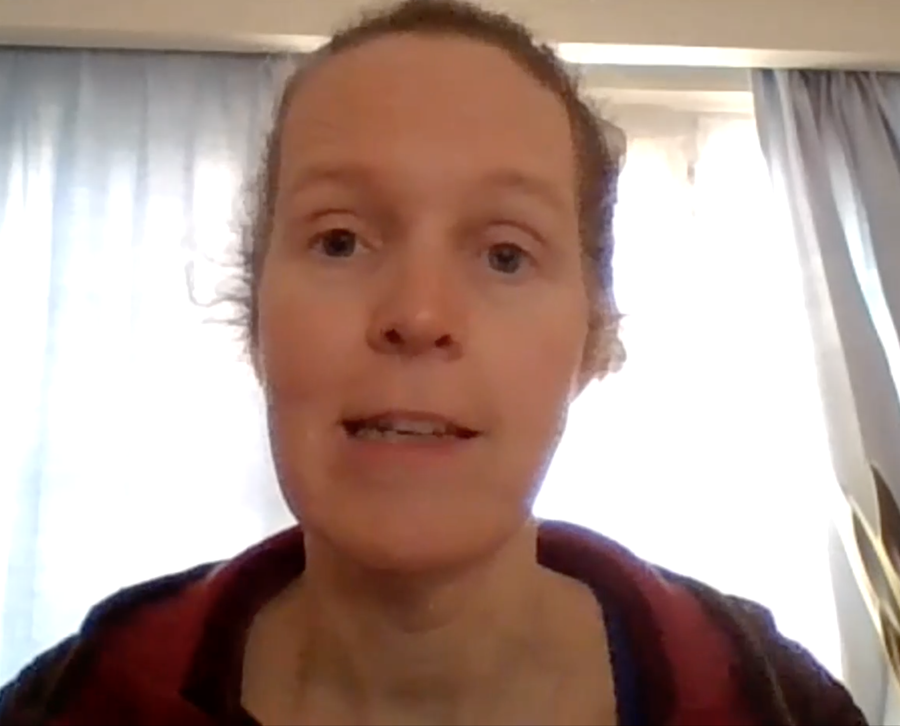
She has two violas: one with gut strings which she uses in baroque orchestra and one modern viola. In our research she is learning to play without a shoulder rest on both instruments. She already tried to do this last summer by herself, but it didn’t work out and she gave up. So our experiment came in a good moment for her. She started the experiment a few weeks ago, she now is at lesson 5 (glissandi).
The Daniela joined us on her iPhone, walking outdoors in Italy with a lovely blue sky behind her, while her husband was at the dentist :-)…
She had some questions about the vibrato lesson in our program, so we watched her video she uploaded to me together in this zoom session.
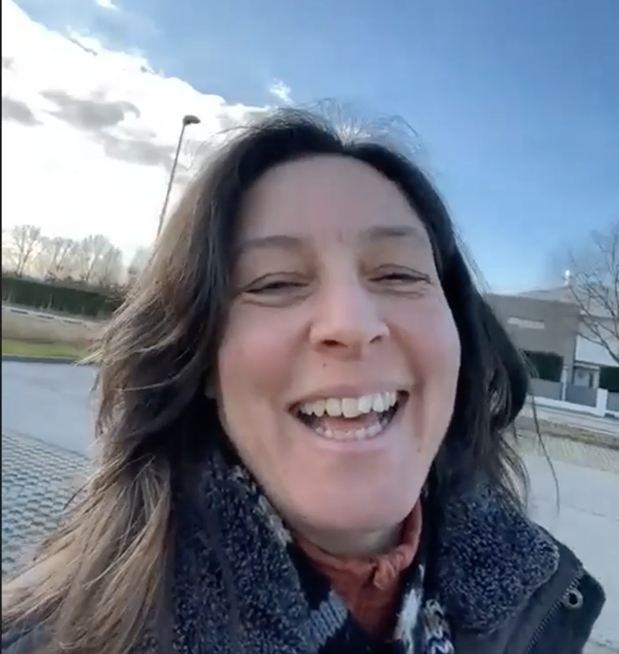


My feedback for Daniela was that the support of her thumb improved a lot since last time, that was great. I was just missing the movability of the hand on the arm (flexibility f the wrist). We proposed that when she would come home, she would take a piece of paper (see picture below) and take it between string and finger (preferably the 3rd finger) and shift this paper back and forth on the string. The hand makes the good movement in that way, and it does not give much resistance, so it’s a nice way to get to know this movement. After your body ‘gets’ this movement, you take away the papered let the third finger stay at the same spot on the string, while the hand makes the same movement like earlier with the paper. You ‘roll’ over the finger top, it get’s a kind of massage. In my Alexander Technique practice I use this exercise a lot to let violinists develop a more souple and natural vibrato that does not create tension. I hope to hear from you how it worked out, Daniela!


Daniela also told us that for her first finger the vibrato is the hardest. So I suggested that she also would do the exercise with the paper with her first finger and just see how much you can move to paper towards her nose…so that her hands starts to realize that this movement is possible, and the wrist starts recognizing that it is possible.

Then Daniela had to leave. In the mean time Cecilia and Nicolette also joined. We continued with Elisabeth her question: Her violin is a bit wobbly and the support on the thumb is not so stable. She played a scale for us and we saw indeed that her thumb had a bit a strange shape while supporting the instrument. Some joints are falling inwards.

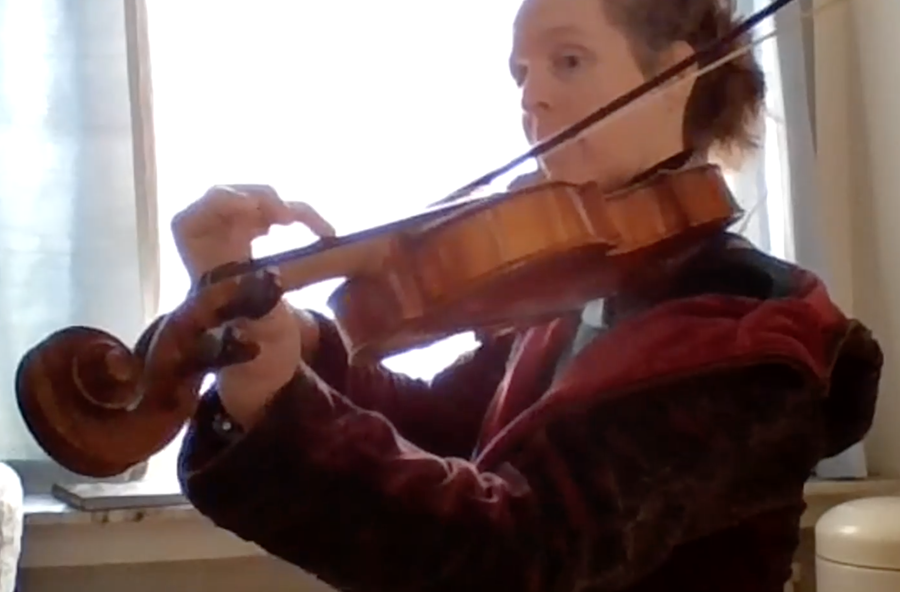
So the question is how to ‘train’ the thumb and hand to use the hints and muscles in healthier way again, especially when you are double jointed. So I advised her to go back to lesson 3 in which we support the violin between thumb and third finger in a round way, and take time for it to get used to that.
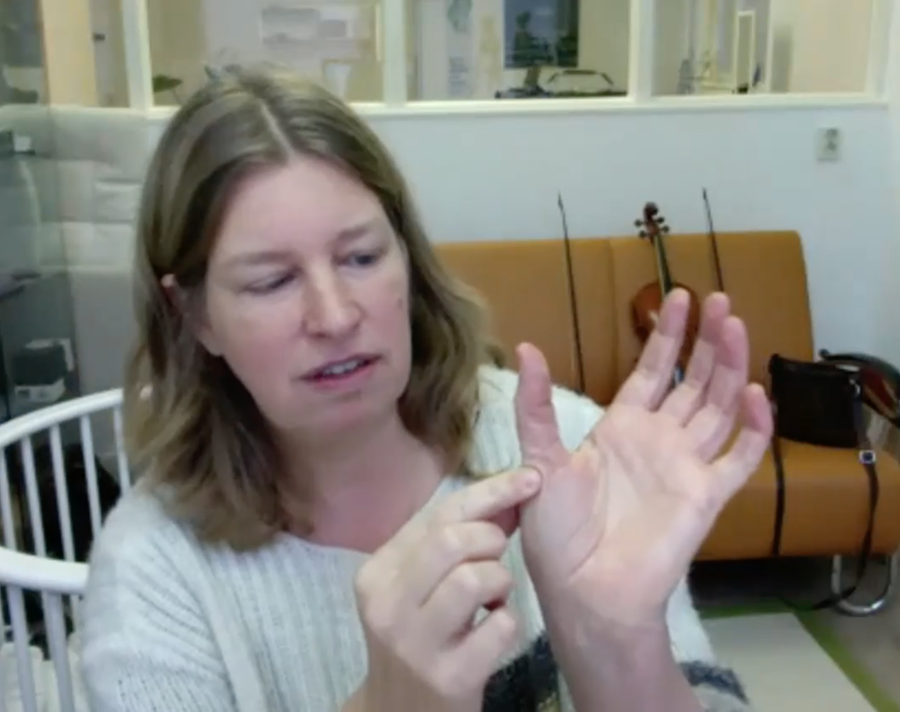

Then Nicolette joined the conversation and told us that she has had a very interesting week, thinking about the use of the thumb. She discovered that in fact she had a wrong body map of the thumb herself, even though she herself said in the last conversation that the base joint of the thumb is near the wrist. So in her own body map her thumb became twice as long this week!

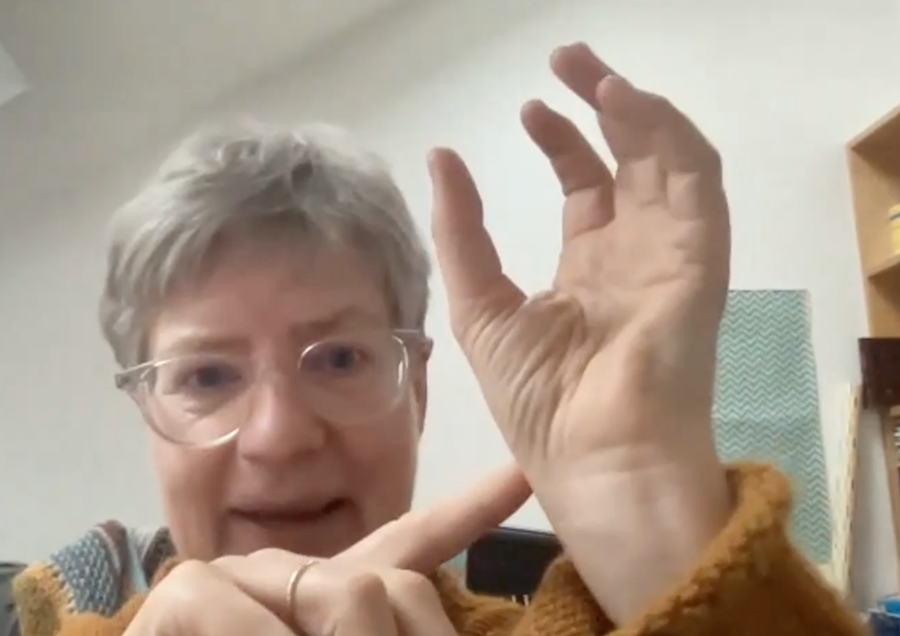
When the thumb is twice as long in your body map (coming from the wrist), the weight of the violin is supported in another way (from near the wrist on) in stead of supporting from the place were the thumb ‘seems’ (!) to enter the the hand (see picture below).
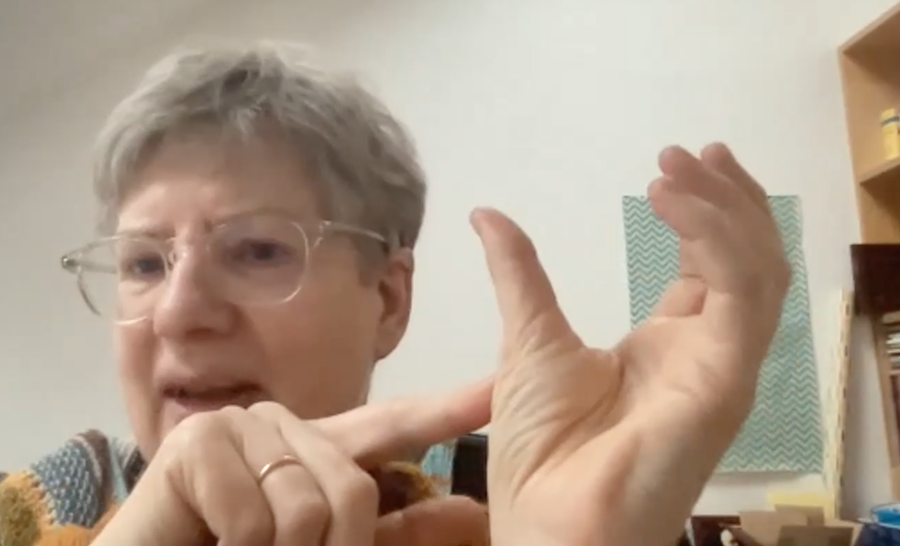
She told Elisabeth that she had the same problem like her, that the second joint of the thumb was collapsing inwards. What you then get, actually, is that the muscles are working too much.
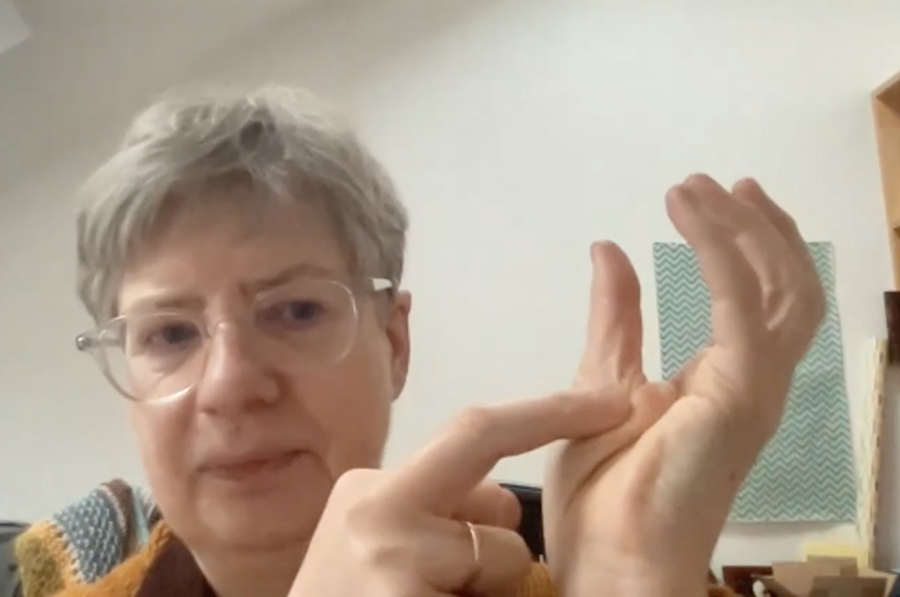
By opening up the hand, widening, in fact the muscles of the mouse of the thumb have to let go, to work less hard.

The whole turning of the hand becomes a different story if you realize that the third joint of the finger is IN the mouse of the thumb and the ‘finger’ is starting from near the wrist.
We were brainstorming together how we could develop an exercise to stimulate the awareness of this. When one pushes with the other hand through the top jointing the hand, without collapsing, then you can feel one line into the wrist. When the line stops after the second joint, it all feels wobbly. It’s just the thinking, nothing to do with ‘power’.
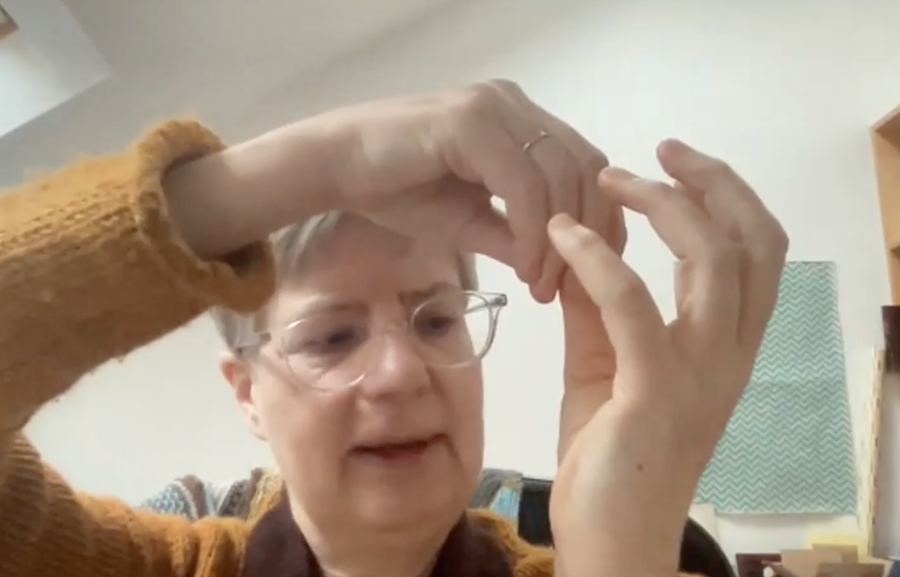
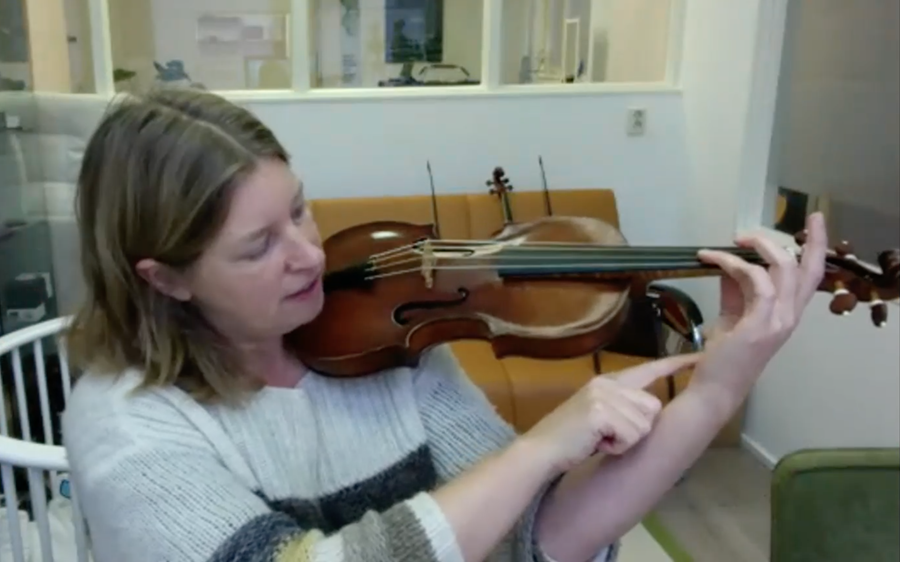
We all put our instrument away and were experimenting with everyone what is happing with the joints if you apply soms power on the top of your thumb.
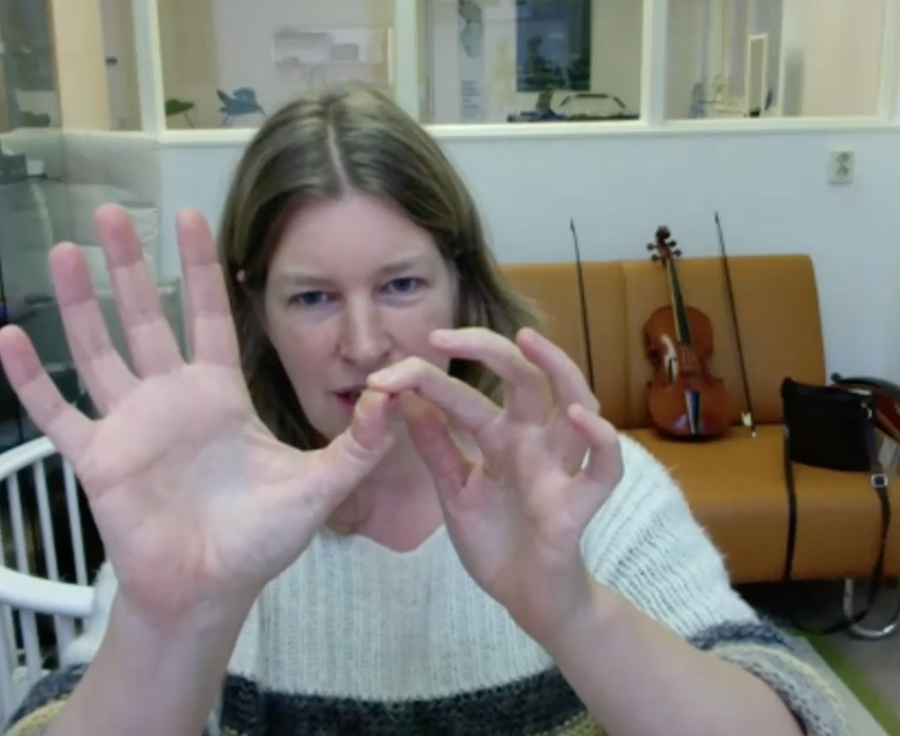

Cecilia also did it and her thumb immediately collapsed. But, when she though towards the base of the thumb inwards (near the wrist), it already was better! Fascinating:
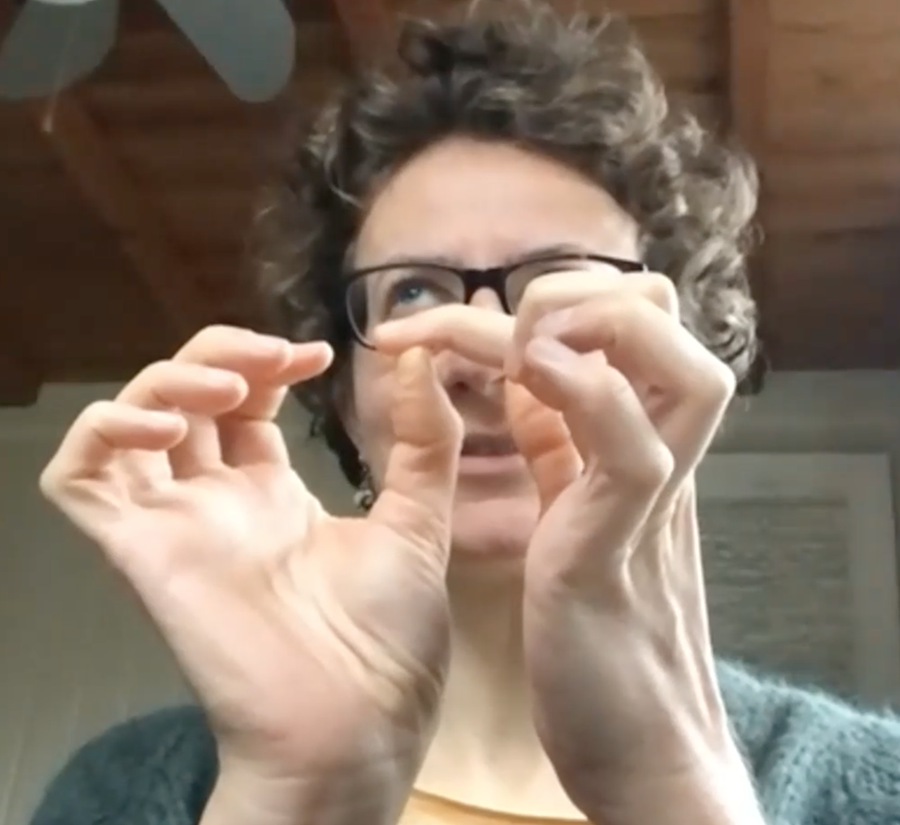
We then worked on it, that the wrist is more in one line, because we were tending to have the wrist pulled backwards which is creating tension. So we did the exercise again with a nice alined wrist and just applying a bit of force from the second joint inwards.
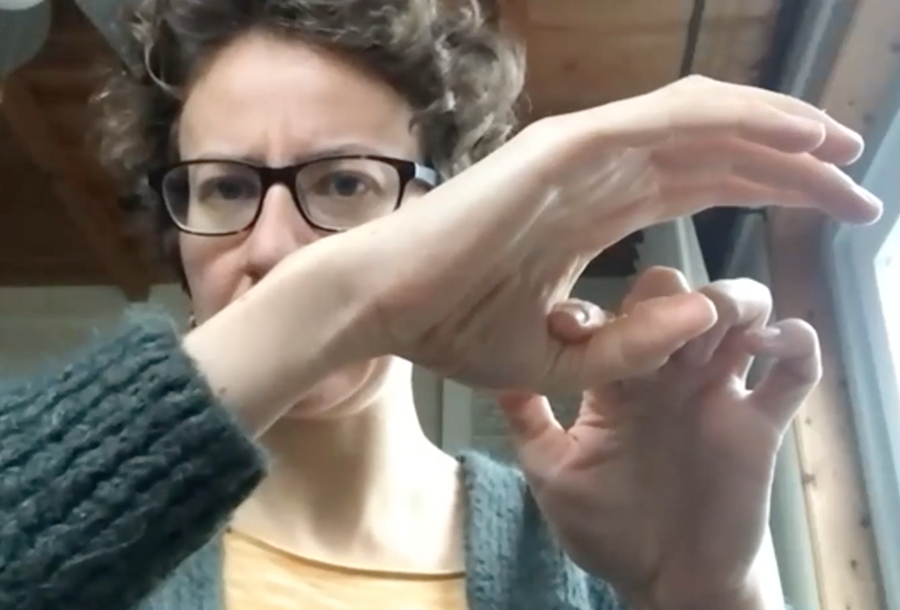
Perhaps it’s good to ‘educate’ the thumb using your other hand, to let it feel where the joint can be, while applying a little bit of power with another finger. In that way we can slowly develop a different use of the thumb.
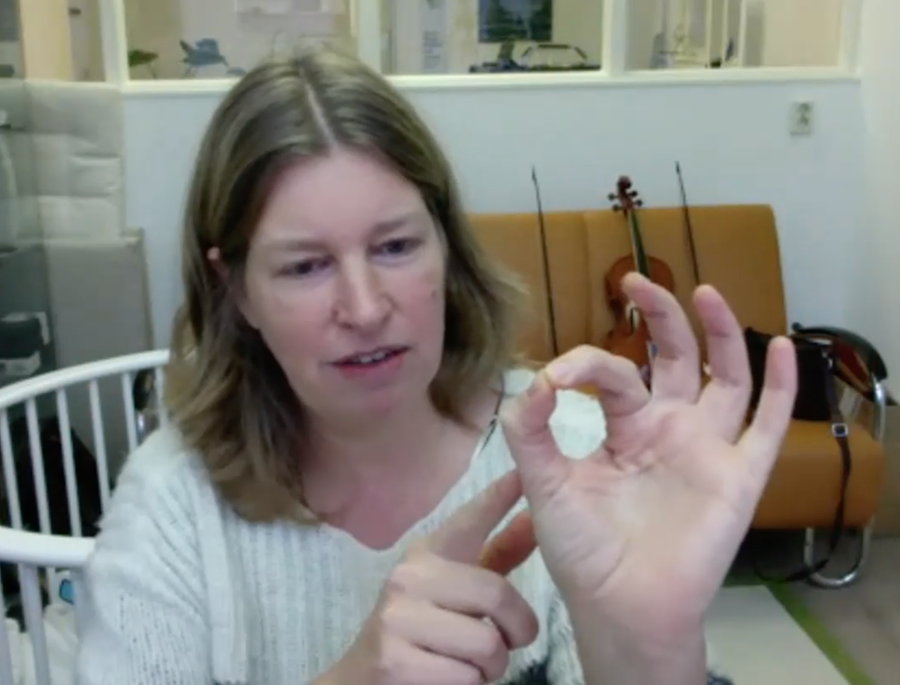

We had an interesting discussion in what way the is ‘train-able’ or ‘reprogram-able’. When you collapse your thumb, the mouse of the hand feels tensed and is much harder. When you open the joint, the mouse relaxed and becomes softer. So it’s not about getting stronger muscles, but about letting go of unnecessary tension. We have to unlearn to use the wrong muscles and to learn to use other ones in stead. One set of muscles has to do less and the other set of muscles has to do more (which they are not used to). Probably the flexors have to do less and the extensors have to do more.
Nicolette stresses that it’s important to think about the bones (skeletal) and the muscles will follow. That is what she discovered when she did the exercises in our experiment.
We had a beautiful discussion on if it would be possible to both train the mind to find less effort and relax the hand and at the same time strengthen the right muscles to support us.
We found that it is important to strain the hand backwards while doing this. Cecilia’s joint seemed to already be stringer hen her wrist was nicely alined and the rest of the hand was more relaxed.
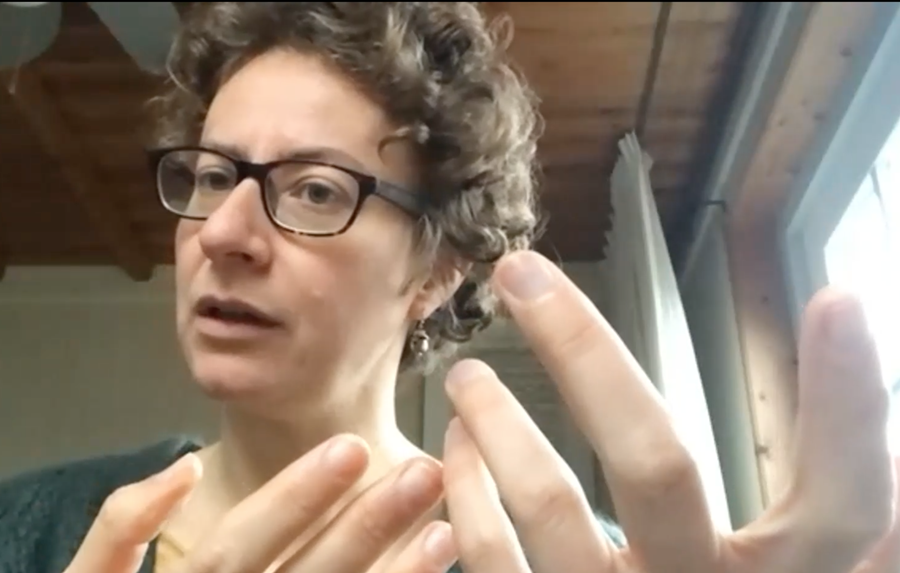
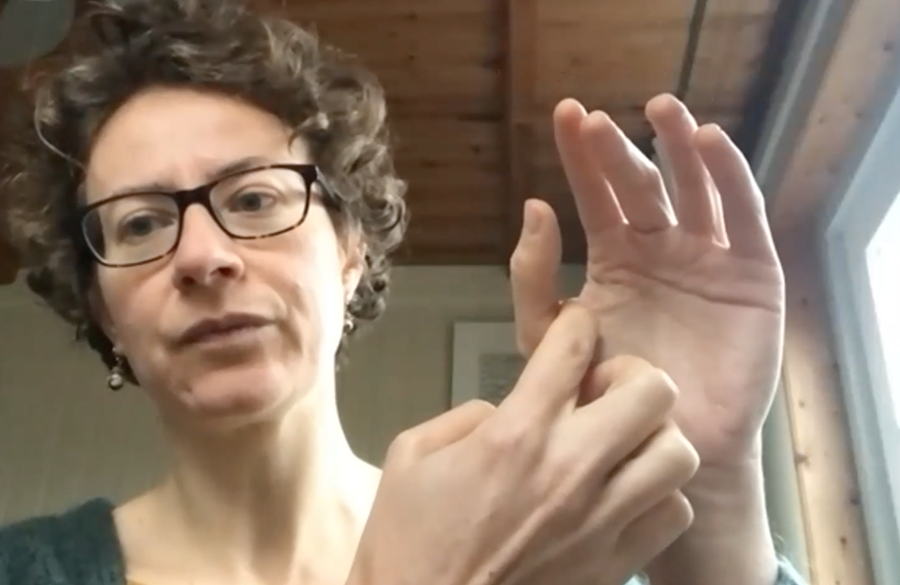
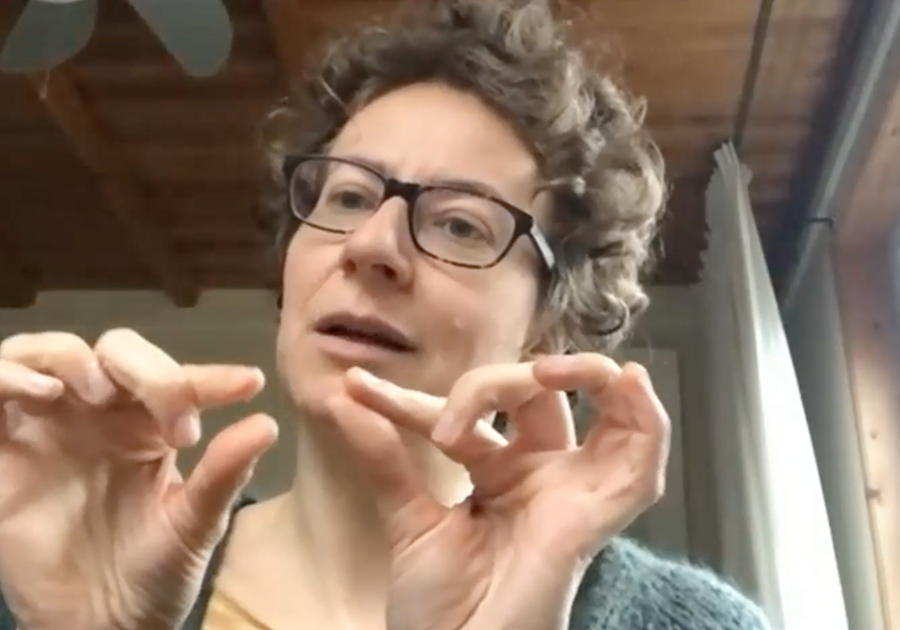
Cecilia said very rightly that this seems a small thing, but in fact it applies to the whole experiment…When are we training something and when do we strain it with too much tension, do we need to reprogram / think things or also build physical strength? It’s very interesting to think about. It’s about using ourselves in a healthy way and find a balance in the muscles. For example with the thumb, it’s about opening and widening it in stead of narrowing. So we need to keep sight on the whole system, not too much on the detail.
The steps could be:
1. Understanding how the skeleton and muscles work and not put too much strain
2. Let the hand open and widen as we spoke about in the previous zoom session
3. And then, when you use it in playing, some new muscles will gain strength and other muscles will lose up, which makes the whole use more dynamic and practical. The other 2 things are important before ‘training’ the muscles in step 3, I would say.
So if this part of the hand feels tired after playing a concert, chances are that you have been over using some muscles. In stead of making it stronger, perhaps we should think more about opening up and softening it. It’s a danger to talk too much about making the thumb more actively involved, because it should be involved but not with using too much power, of course. When the bones (skeleton) are collapsed, the muscles tend to get overused to compensate. When the bones are rightly used, the muscles can use much less power and function more effectively with less power. It’s about a balance between the flexors and the extensors. That will happen when we allow them. In the collapsing the flexors are working too hard, they need to relax more and the extensors could work a bit harder. It immediately influences the turning of the hand, as well, this will go easier if the flexors give way.
If you use yourself in a nice way, the movement will feel effortless, as if it goes by itself. It should not feel like hard work. This is both in Alexander Technique and Feldenkrais one of the fundamental principles.
We talked about working out: Is it useful or not, for musicians? We concluded that the way you do it is the most important. Many people do themselves harm in working out, it’s not always healthy. Just becoming stronger is not the ideal solution.

Daniela asked if our hands are symmetrical, because in her case her right thumb is collapsing and her left thumb is not. Most of us had a difference between the two hands. The collapsing of the thumb can be seen with some people in bowing as well. Daniela realised that perhaps with bowing her thumb is too passive, as she is used to put it under the frog, without having all joints being involved.
I really think it is important to use both hands in a round way and grip things like this:
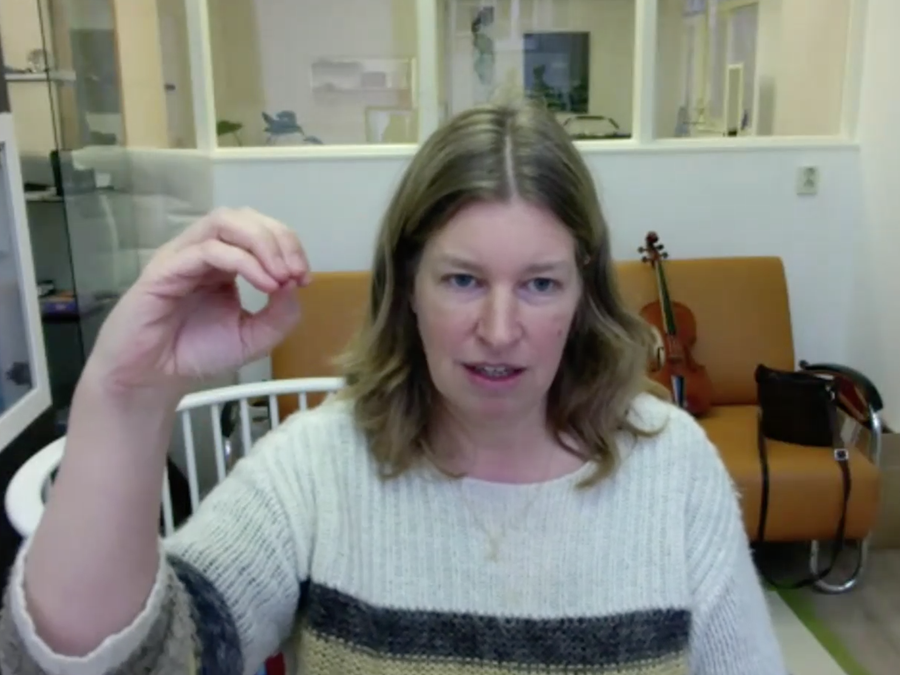
And not like this, as it creates a lot of tension in the lower arm:

So not like the Muppet show ;-)..

It could be a nice exercise to have your hand relax and then move the thumb towards each finger by moving it from the base (near the west) and feel the effect in the whole arm:
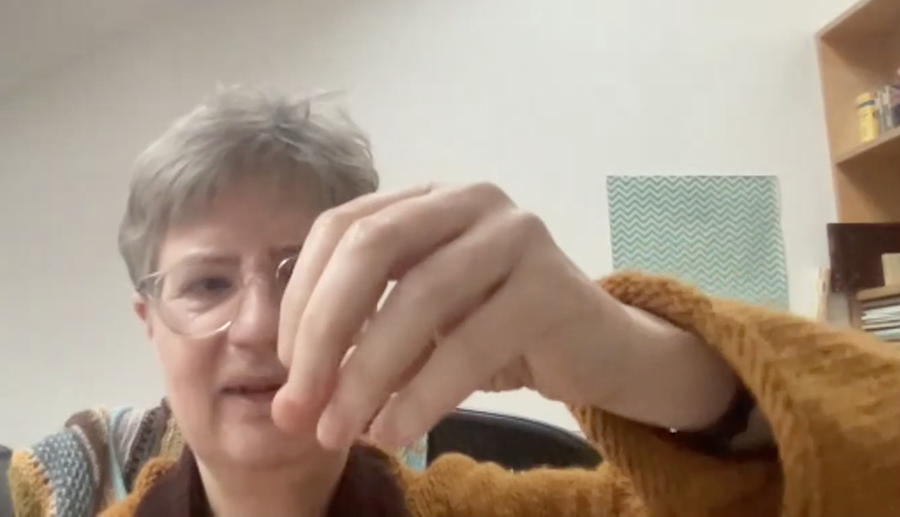
This is one of the challenges in my research: How to develop good exercises for people to become aware of the function of the thumb and how to practice that.
Cecilia suddenly realised that in her right hand she has much less mass of muscles in the mouse of her left thumb than she has in the mouse of the right thumb.


So we agreed that she needs to learn to use much less strength in the left hand and use other muscles to be involved. It probably is a result of the collapsing thumb, which creates strain. In her case her thumb has to let go more in stead of working harder. In fact for Nicolette this is true too. I think for all participants in the experiment this is important: Think not too much about developing more power, but more about understanding the functioning of the thumb.
For this we need to become own touch with some parts of the thumb that are collapsing. You can touch it sometimes, just to make the connection to your brain. And do the practice as described above, touching the fingers one by one by moving the whole (!) thumb.
We can also think about it while bowing: Do you support your bow from the second joint of the thumb or from the third (near the wrist) joint?
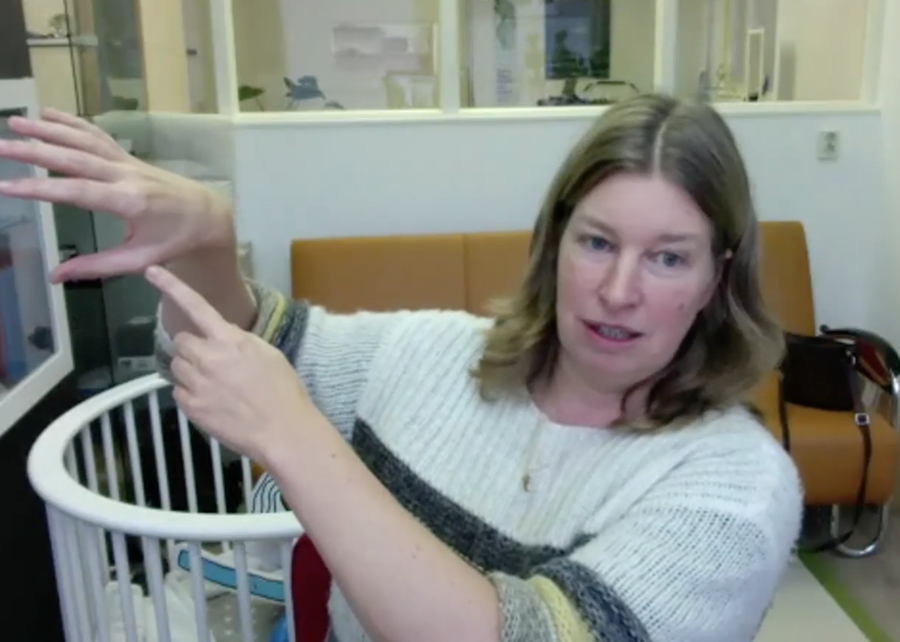
My second joint of my thumb is collapsing when I hold the bow in the air, you see?

Cecilia is not collapsing in the way she uses her right thumb is nicer than the left thumb and she has less muscle mass there! Very interesting…
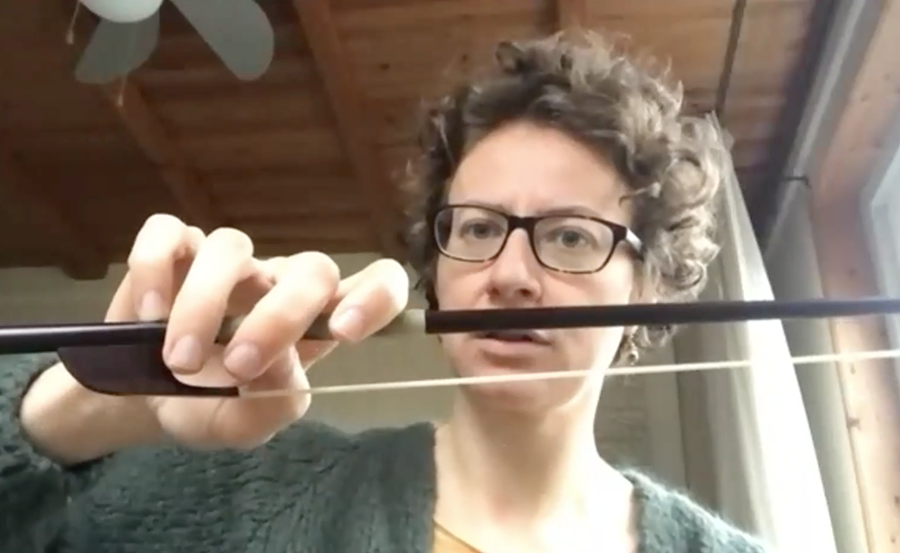
Nicolette her right hand also did not collapse, so their left hand can learn from the right hand. We joked that maybe they should practice playing violin right-handed ;-)… it’s interesting to alternate sides in general.
Perhaps you know the story of Reinhard Goebel, who messed up his left hand and then started playing violin right-handed… but he kept doing the same things while playing violin at the other side, not changing his habits, so then he also messed up his other hand as well. A better idea would perhaps have been to think about it what he was doing…
We also spoke about the difference between viola and violin. In my opinion it’s not needed to to let it hang more than a violin, I prefer for both to keep it horizontal. Many people think that their viola is much more heavy than it is. I asked many musicians and some of them think really 2 kg for example! It’s not. And half of the weight is on your collarbone, so there is not so much weight to support, in fact.
We had interesting discussions about if some really fantastic musicians who play with a lot of strain would be even better musicians if they could use their body in a better way, or that this would take something of from their artistry. And if scientists would be better scientists if they would not only use the brain, but also would be in contact with their body (which often is not the case at all). And if ballet dancers perhaps could have much longer careers if they would use their body with less strain during the training and early career. We all thought so, in fact.
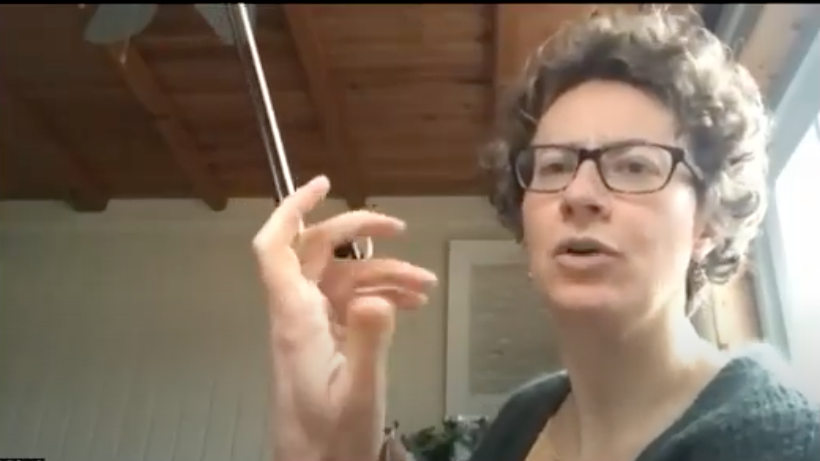
After that we became a bit more practical again. Cecilia had some questions about what exactly the steps are in my approach for shifting back and we made some clear steps together:
1. Slide back with the fingers to the position you want to go to, but leave the thumb where it is, supporting the instrument.
2. After arriving in the new position, change the support to the base joint of the index finger supporting the instrument (the wrist is bended inwards for a short moment, in Dutch a ‘centebakje’).
3. Bring the thumb back (it is not supporting the instrument while gliding back, you could practice even moving the thumb through the air (leaving the contact with the instrument) to check that it is free.
4. Open the hand again: the thumb takes over the support again together with one of the fingers, and the side of the index finger is soft and open again.
It seems many steps, but if you practice it slowly it becomes logical and you will do it automatically. You also can play a few notes with the thumb still in the ‘old’ position and choose a convenient moment in the music to bring the thumb back. To be able to do that, you first have to been working on the joints of the thumb (see beginning of this newsletter), so that they are not collapsing (if they have this tendency), otherwise it gives strain to play on with the thumb in the old position.

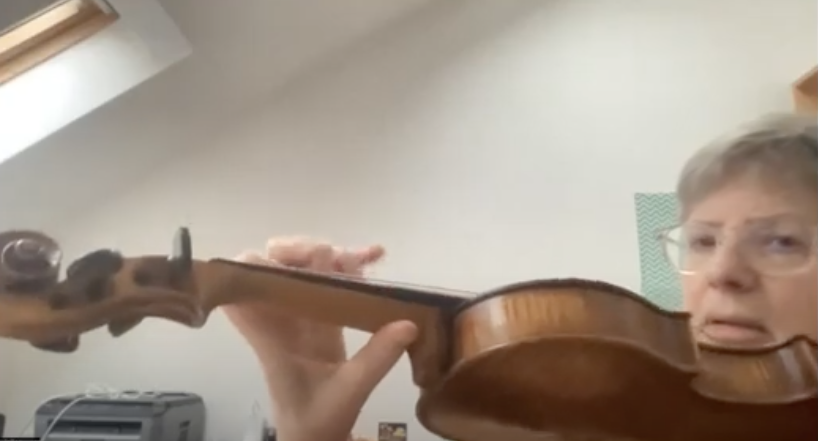
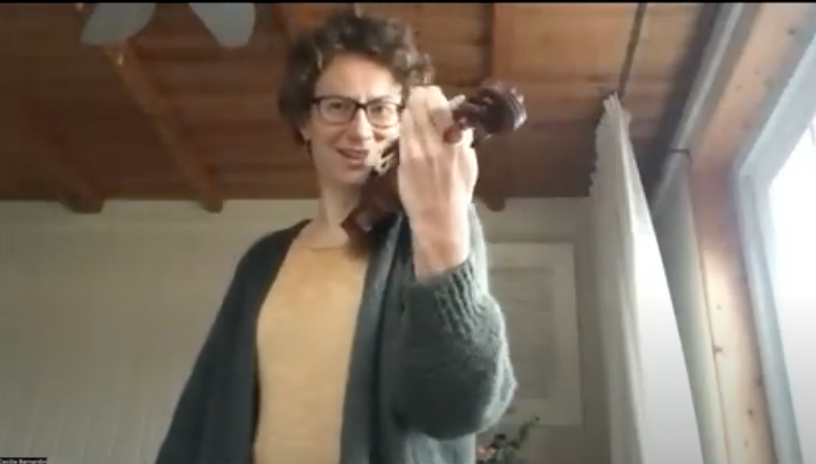
Cecilia also shared with us that she just had been directing the Brandenburg concerti, last week in Paris, also playing on a copy of a real piccolo violin. She had to think a lot about our experiment, as she had to rethink everything again and there is no need to make many position changes. The corpus is very small but the neck is almost normal. She discovered that she could really support it with the thumb and the more she trusted it, the better the sound was. As soon as she started pressing for example, the sound became unbearable. It taught her a lot.
We also had some nice discussions about what informed pitch is (certainly not A = 415!), how to keep questioning and inquiring things and not copy other ‘historical informed’ players, but think for yourself. If it works to listen to recordings of others, and how to stay with your own originality, etc., etc. The paradox between collecting knowledge about the era you play music from and just using your own musicality without much information. And also about the lifestyle of traveling so much, the fact that some musicians are getting so tired from it and others just want to keep doing that until a very high age. Nicolette is very happy to teach more Feldenkrais now and travel less. Cecilia and me also travel less since becoming mother, which feels more balanced in a way, it’s interesting. And that we see that there are much less conservatory students at the moment… Anyway, too much to write it all here in the newsletter… 🙂
Please take your time
It is important that everyone in this experiment enjoys the curiosity we have, and take part in a joyful and playful way. In that way, we learn the best. Don’t try too much to ‘do it right’…and don’t hurry. If you need more time, just let me know, keep me informed, and we take a bit longer. No problem!
Best regards, please let me know if you have questions,
Esther Visser
